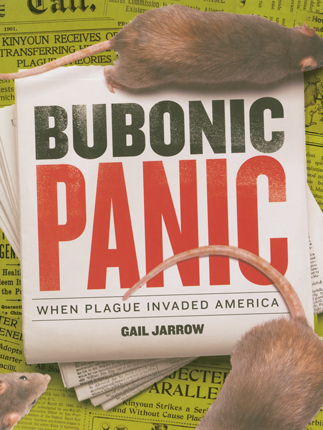Full Text Reviews: School Library Journal - 02/01/2016 Gr 5 Up—With a mesmerizing description of the suffering endured by bubonic plague victims, followed by several fascinatingly gruesome photographs depicting visible signs of the disease, Jarrow hooks readers from the start. This final installment of the author's "Deadly Disease" trilogy is as compelling as the first two titles, Red Madness: How a Medical Mystery Changed What We Eat (2014) and Fatal Fever: Tracking Down Typhoid Mary (2015, both Boyds Mills). Before describing the chaos the plague wrought on American shores, Jarrow recounts major plague outbreaks throughout history as well as early bacteriological advances, such as the identification by French scientist Alexandre Yersin of the microbe responsible for the bubonic plague. The plague arrived in the port city of San Francisco in 1900 and claimed its first victim in Chinatown, a neighborhood near the wharves. Chinatown was quickly quarantined by the Board of Health, but with California Governor Henry T. Gage denying the existence of plague and Chinese officials bucking against perceived discrimination, tensions rose and containment efforts failed. Eventually Rupert Blue of the Marine-Hospital Service was brought in by the surgeon general to control the outbreak. When the plague returned to San Francisco in 1907 after the devastating earthquake of 1906, Blue came back. By this time scientists had determined that the fleas on rats were responsible for transmitting the plague, and the city mobilized to curtail the rat population, successfully containing the outbreak in a matter of months. Weaving in numerous photographs and newspaper clippings, Jarrow tells an absorbing story. VERDICT Nonfiction that reads like a thriller—not to be missed.—Ragan O'Malley, Saint Ann's School, Brooklyn, NY - Copyright 2016 Publishers Weekly, Library Journal and/or School Library Journal used with permission. Bulletin for the Center... - 04/01/2016 If you associate plague with quaint European woodcuts of scythe-wielding skeletons or crowded Asian harbor cities, then shudder and prepare to be schooled in plague’s historical migration to the United States and its current residence among us. After initial chapters treat plague’s manifestations (bubonic, septicemic, and pneumonic), millennia of global outbreaks, and the slow but steady progressive efforts at epidemiological control, Jarrow cuts to the chase with the too-close-to-home detail of its appearance in its probable epicenter of early twentieth-century San Francisco Chinatown. In this first wave of infection, epidemiologist Joseph Kinyoun ran up against brick walls of anti-Chinese racism and financial anxiety by city fathers and business leaders. Politics shifted and better funding was provided to Dr. Rupert Blue, who was brought in during the second wave and who managed to implement effective strategies for rat control, which in turn began to impede flea-borne transmission. But just when San Francisco could breathe a bit easier, bubonic and pneumonic outbreaks occurred in Los Angeles in the mid 1920s. And today? Vaccines and medications are far better at containing epidemics and easing sufferers, but the bacteria are still alive and well among wild animal populations, particularly in the American Southwest. Jarrow’s latest disease presentation takes a more traditional nonfiction approach than the medical mystery of Red Madness (BCCB 4/14) or the personality-focused Fatal Fever (BCCB 4/15), but it is appropriately broad in scope, deft in explanations, and sensitive in handling public health issues. A wealth of period and cringeworthy medical illustrations supplement the text, and end matter comprises a glossary, timeline, annotated bibliography, author and source notes, and index. EB - Copyright 2016 The Board of Trustees of the University of Illinois. School Library Journal - 12/01/2016 Gr 5 Up—The arrival of bubonic plague in San Francisco in 1900 resulted in not only death but also fear, quarantine, and social upheaval. With the diligence of a detective, the awareness of a sociologist, and a novelist's flair for the dramatic, Jarrow investigates a terrifying period of U.S. history while also delving into the background of the disease. This compellingly designed, artfully written blend of science and history will enlighten as it entices. - Copyright 2016 Publishers Weekly, Library Journal and/or School Library Journal used with permission. Loading...
|




